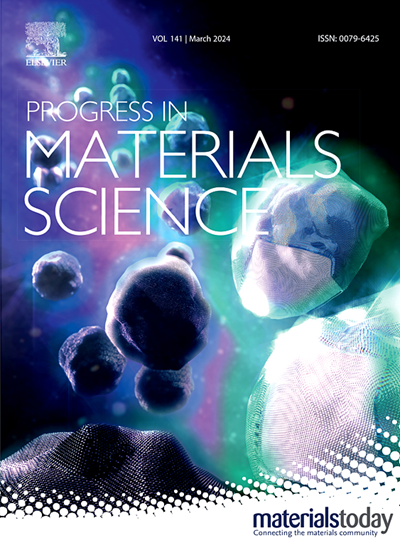走向灵活的能量存储:从合成原理到设备应用的MXene框架
IF 40
1区 材料科学
Q1 MATERIALS SCIENCE, MULTIDISCIPLINARY
引用次数: 0
摘要
可穿戴、便携式和可折叠电子设备的快速发展暴露了传统储能技术的关键局限性,特别是在机械适应性和小型化方面。为了解决这些挑战,需要开发不仅具有电化学稳定性,而且具有机械灵活性和可扩展性的储能系统。MXenes是一类新兴的二维过渡金属碳化物、氮化物和碳氮化物,由于其独特的结构和物理化学属性(电导率、可调表面化学性质和内在的机械灵活性),已成为柔性储能应用的引人注目的候选者。本文综述了针对柔性储能系统量身定制的MXenes的合成和结构调制的最新进展。重点放在它们与互补材料的集成上,例如碳纳米结构(例如,纳米管和纳米纤维),过渡金属氧化物(例如,V2O3, VO2和TiO2)和多孔基质。讨论涵盖了广泛的器件化学,从各种柔性电池应用到超级电容器,并强调了MXenes在电荷传输、离子扩散和机械弹性方面的机制作用。主要挑战包括应变下的结构退化、界面稳定性和可扩展处理。除了战略设计原则外,还强调了指导未来机械兼容和高端Mxene柔性能源技术发展的战略设计原则。本文章由计算机程序翻译,如有差异,请以英文原文为准。
Toward flexible energy storage: MXene frameworks from synthesis principles to device applications
The rapid proliferation of wearable, portable, and foldable electronics has exposed critical limitations in conventional energy storage technologies, particularly in terms of mechanical adaptability and miniaturization. Addressing these challenges necessitates the development of energy storage systems that are not only electrochemically robust but also mechanically flexible and scalable. MXenes, an emerging class of two-dimensional transition metal carbides, nitrides, and carbonitrides, have emerged as compelling candidates for flexible energy storage applications owing to their distinctive structural and physicochemical attributes (electrical conductivity, tunable surface chemistries, and intrinsic mechanical flexibility). This review critically examines recent advances in the synthesis and structural modulation of MXenes tailored for flexible energy storage systems. Emphasis is placed on their integration with complementary materials, such as carbon nanostructures (e.g., nanotubes and nanofibers), transition metal oxides (e.g., V2O3, VO2, and TiO2), and porous matrices. The discussion encompasses a broad spectrum of device chemistries, ranging from diverse flexible battery applications to supercapacitors, and highlights the mechanistic roles of MXenes in charge transport, ion diffusion, and mechanical resilience. Key challenges, including structural degradation under strain, interfacial stability, and scalable processing, are identified. Alongside strategic design principles to guide the future development of mechanically compliant and high-end Mxene based flexible energy technologies are highlighted.
求助全文
通过发布文献求助,成功后即可免费获取论文全文。
去求助
来源期刊

Progress in Materials Science
工程技术-材料科学:综合
CiteScore
59.60
自引率
0.80%
发文量
101
审稿时长
11.4 months
期刊介绍:
Progress in Materials Science is a journal that publishes authoritative and critical reviews of recent advances in the science of materials. The focus of the journal is on the fundamental aspects of materials science, particularly those concerning microstructure and nanostructure and their relationship to properties. Emphasis is also placed on the thermodynamics, kinetics, mechanisms, and modeling of processes within materials, as well as the understanding of material properties in engineering and other applications.
The journal welcomes reviews from authors who are active leaders in the field of materials science and have a strong scientific track record. Materials of interest include metallic, ceramic, polymeric, biological, medical, and composite materials in all forms.
Manuscripts submitted to Progress in Materials Science are generally longer than those found in other research journals. While the focus is on invited reviews, interested authors may submit a proposal for consideration. Non-invited manuscripts are required to be preceded by the submission of a proposal. Authors publishing in Progress in Materials Science have the option to publish their research via subscription or open access. Open access publication requires the author or research funder to meet a publication fee (APC).
Abstracting and indexing services for Progress in Materials Science include Current Contents, Science Citation Index Expanded, Materials Science Citation Index, Chemical Abstracts, Engineering Index, INSPEC, and Scopus.
 求助内容:
求助内容: 应助结果提醒方式:
应助结果提醒方式:


